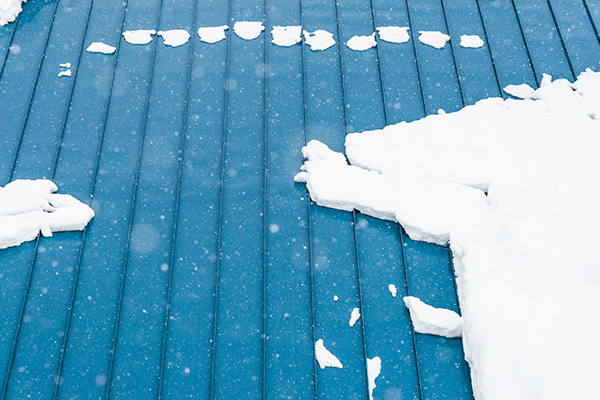No products in the cart.
Foolproof Pipe Boot Installs for Metal Roofs in Winter

Pipe boots are critical roofing components, allowing essential vent stack functionality while preventing leaks. However, frigid conditions introduce unique challenges for proper boot sealing and adhesion. This article covers specialized material selection, surface prep, and strategic installation techniques to guarantee watertight, durable pipe boot performance all winter long.
Carefully Select Products Rated for Sub-Zero Application
When selecting pipe boots, be sure to choose options suitable for withstanding freezing conditions. Many standard boots lack the material flexibility and cold-adhesion properties necessary for sub-zero reliability.
We recommend Dektite's silicone or EPDM pipe boots which both meet key cold application criteria. Their rubber compounds and installation procedures are proven to withstand winter's harsh temperatures of without seal failures when properly installed.
Proper Substrate Prep Prevents Bonding Issues
Just like summer installations, correctly prepping metal roofing ensures tenacious pipe boot adhesion in the cold.
Use abrasives to lightly scuff and remove any oil or debris that could compromise bonding. Apply a thin primer layer suited for winter application. Butyl and rubber boot compatibility differs―verify recommended products. Allow proper cure times before attaching boots.
Rushing this process risks seal failure from poor surface adhesion. Don’t cut corners! Even with freeze-resistant materials, mindful substrate prep remains critical.
Account for Shrinkage and Expansion During Installation
Frigid temperatures impact butyl and rubber compounds prior to curing. Expect more contraction and less initial tack during application. Carefully position boots to compensate for thermal movement as temperatures fluctuate.
Gently heat substrates with a torch before applying tapes or sealants if ambient temperatures prohibit adequate stick. This allows proper positioning without stretching or pulling. Gradually heat tapes as well to restore bonding agents’ malleability prior to smoothing and sealing.
Integrate Supplemental Sealing Strategies
Due to possible shrinkage, sole reliance on pipe boots is insufficient for cold weather protection. Integrate redundant sealing tactics like butyl tape at the roof plane transitions:
Close any gaps where wind-driven moisture could penetrate. This layered approach provides exceptional insurance against ice dam related breeches.
Long-Term Protection Backed by AMSI Supply
By combining the right materials with proper cold weather application procedures, pipe boots provide lasting, dependable roofing protection season after season. AMSI stocks versatile butyl and rubber tapes, primers, and applicators to meet any winter project requirement while delivering exceptional service roofers rely on.
Our pipe boot selection includes sizes and styles with demonstrated sub-freezing reliability across standing seam metal roofing applications. Connect with our experts today to discuss your specific needs! We proudly supply leading manufacturers’ parts to roofers nationwide while offering technical guidance you won’t find elsewhere.
Investing a bit more diligence into materials and installation practices saves significantly on emergency leak calls and expensive repairs later on. Trust AMSI Supply to provide the top-tier products and invaluable insights to take on winter’s worst with confidence! Your customers will appreciate lasting peace of mind backed by our decades of metal roofing expertise.